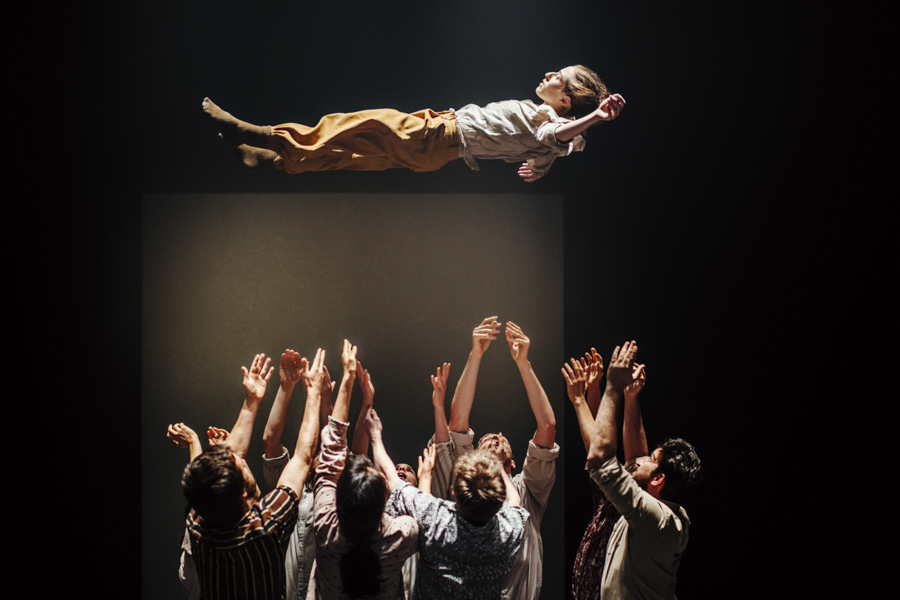
Hofesh Shechter’s Grand Finale is a work fraught with a sense of impending doom, a Sisyphean struggle punctuated by brief bouts of frenzied gaiety. Presented in Israel as part of the London in Tel Aviv Festival, it is meticulously constructed: all the elements of this piece – movement, music, set, costumes and lights – function together, establishing mood and eliciting thoughts and associations. The costumes suggest street clothes of our era, and the implicit apocalyptic theme very much reflects the current state of the world, as we dance our way to extinction.
As it opens, a string quintet plays quietly behind a wall, and all ten dancers enter the dimly lit stage in a curving tangle of constant, intricate, movement, filling it with their presence, their numbers magnified by the expressive fluidity of their gestures, suggesting crowds of people, the striving masses. In their gestures of struggle and surrender, one might read the memory of a past disaster, the conflict of the present moment, or the chaos to come. The set design consists of tall, dark, moveable panels, whose image and placement give rise to different interpretations. Looming dark, at times casting their shadows on the stage, as bodies fall and are dragged away in a repeated motif, thoughts of tombstones and mausoleums are inevitable. At other times, the walls are literally closing in, creating a feeling of claustrophobia. At other times they form a barricade, a separation, an impediment to vision.
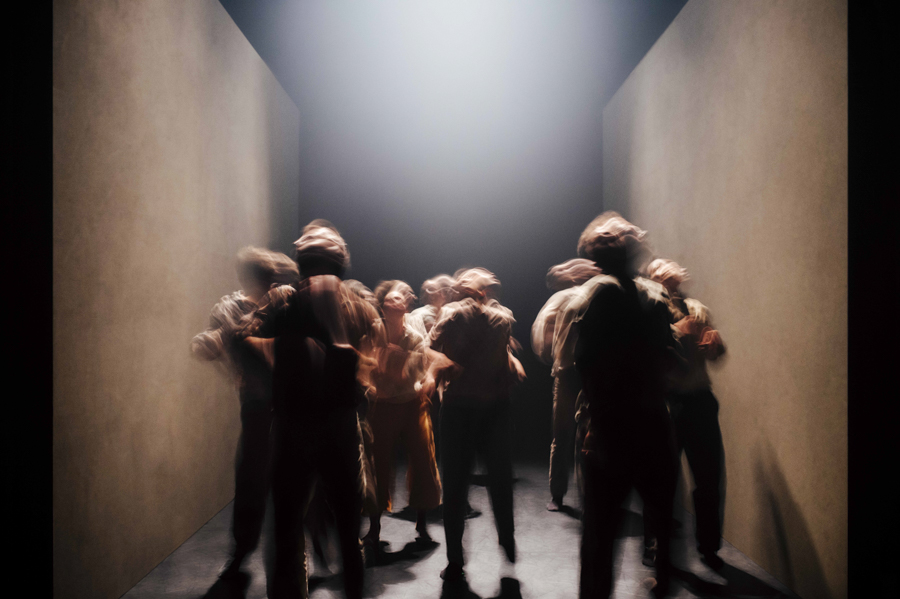
Set apart by their formal wear and instruments, the musicians are an integral part of the work, appearing, disappearing and reappearing in different places. They are a source of beauty and entertainment within the work, and a wry memento mori as they call to mind the band of the Titanic. The rose-tinted sweetness of Franz Lehár’s The Merry Widow may lull the listener into an expectation, if not of salvation, then at least better times to come, yet this is shattered by Shechter’s original electronic score, which leaves no room for illusions.
There is no one narrative arc to the work. It feels as though the work alludes to different scenes and situations, fragments of narrative opening and disappearing in the mist. In one moment the dancers form a line and their steps recall an Israeli folkdance, not long after they change their formation, their movements and vocalizations calling to mind a Maori war dance. Lined up in single file, their bodies swaying lightly from side to side, their mouths are open wide like Munch’s The Scream, their cheeks hollowed out by the gesture, like starving prisoners in a camp. Iridescent bubbles float down from above, and they look up in wonder; moments of beauty as enigmatic and random as moments of violence. All at once they gather together, whooping, and throwing a dancer up in the air. There is a fleeting sense of release from all the tension that has built up throughout the first part, and with it, comes – at least for this viewer, a sense of expectation.
Yet following the raucous and comic interlude of the intermission, as Grand Finale resumes, the second part continues to send out fragments of narratives, hints of allusions, and the outlook remains bleak. If there is any consolation to be found in this gloom, it is that in this desperate time, the dancers turn to one another, dancing, touching, holding on. There is no moment of revelation, catastrophe or even – at least for this viewer – a sense of closure, evoking the sense of T.S. Eliot’s famous line from The Hollow Men: “This is the way the world ends/Not with a bang but a whimper.”

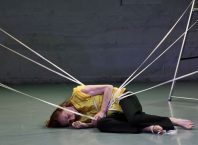
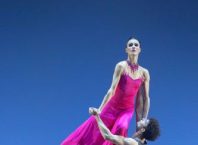


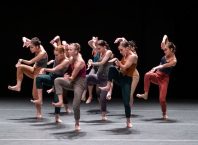
[…] Shechter, whose Grand Finale was recently performed at the Israeli Opera (read the Midnight East review here), is one of the leading choreographers on the contemporary dance scene. The Aterballetto company […]
Comments are closed.